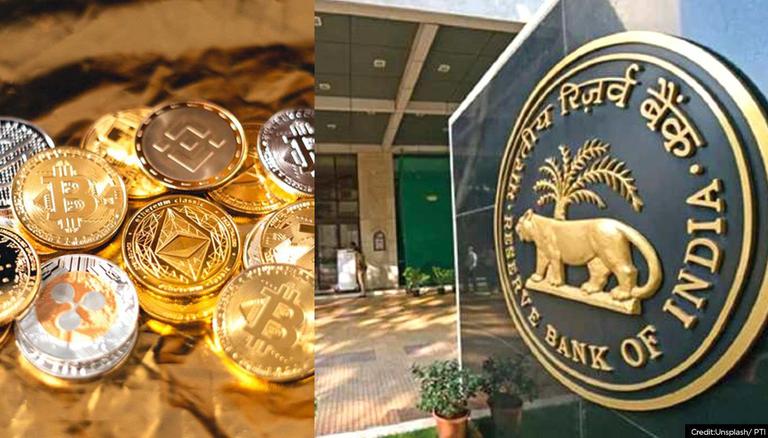The Reserve Bank of India (RBI) used the wholesale digital rupee on a trial basis starting on Tuesday, November 1, initially for the settlement of transactions in government securities, making it one of the first, foremost central banks in the world to begin a pilot project with its virtual currency.
Advertisement

What is RBI digital currency?
According to the concept note released by the RBI on October 7, 2022, the RBI digital currency can be characterized as the legal tender given by the Reserve Bank of India, known as the Digital Rupee. According to the regulator, RBI digital currency is equivalent to a sovereign currency and can be exchanged one-to-one at par with the fiat currency. The RBI has planned to create two variants of the e-Rupee.
RBI digital currency is the legal tender given by the Reserve Bank of India, known as the Digital Rupee. According to the regulator, RBI digital currency is equivalent to a sovereign currency and can be exchangeable one-to-one with the fiat currency. The RBI has planned to create two variants of the e-Rupee.
Advertisement
Read also:
How To Buy RBI Digital Currency
10 Upcoming Crypto Airdrops In 2022
Top Industrial Stocks To Buy In 2022.
Advertisement
When will RBI launch digital currency?
The Reserve Bank of India, on November 1, 2022, (RBI) announced the launch of the Digital Rupee pilot program in the wholesale sector.
All you need to know about RBI digital currency
According to the central bank, the Reserve Bank of India (RBI) began the pilot phase of the Digital Rupee in the wholesale segment on November 1, 2022. For participation in the trial launch of the digital rupee-wholesale market, the regulator has selected nine banks, including Union Bank of India, State Bank of India, Bank of Baroda, HDFC Bank, IDFC First Bank, ICICI Bank, Kotak Mahindra Bank, YES Bank, and HSBC.
Advertisement
Difference between the digital rupee and cryptocurrency
A decentralized digital asset and medium of exchange based on blockchain technology is known as cryptocurrency. Its decentralized character, which refers to its operation without using a mediator like banks, financial organizations, or central authority, has generated controversy.
In comparison, the Reserve Bank of India (RBI) will issue Central Bank Digital Currency (CBDC) that would be legal money online. In that it would be backed by the government, the digital rupee will vary from Bitcoin, Ethereum, and other cryptocurrencies. Second, the digital rupee will be similar to holding a physical rupee equivalent since it has an intrinsic worth due to government backing.
Why RBI is introducing CBDC
CBDC is intended to offer users an extra payment option, not to replace the present payment systems. It is not intended to replace current forms of currency. The RBI is confident that introducing the digital rupee will “boost India’s digital economy, expand financial inclusion, and improve the efficiency of the monetary and payment systems.” RBI offered the following justifications for India to think about issuing CBDC:
- A decrease in the price of managing physical cash.
- To promote digitization to eliminate the cash economy.
- Promoting payment competition, effectiveness, and innovation.
- To investigate the application of CBDC to enhance cross-border transactions.
- Encourage financial integration.
- Protect the ordinary person’s faith in the national currency against expanding crypto assets.
Features of Digital Rupee
- Following their monetary policies, central banks issue the sovereign currency known as CBDC.
- It shows up as a liability on the central bank’s balance sheet.
- All individuals, businesses, and governmental organizations must recognize it as a legitimate form of payment, legal money, and a secure repository of value.
- CBDC is freely convertible into cash and money from commercial banks.
- Holders of CBDC do necessarily need a bank account because it is fungible legal money.
- CBDC is anticipated to bring down the price of issuing money and conducting transactions.
How is the digital rupee different from money in digital form?
“A CBDC would differ from present digital money available to the public because a CBDC is not a liability of a commercial bank but the Reserve Bank,” the Reserve Bank stated in a statement explaining the distinction between the two types of currency.
Advertisement
CBDC can be divided into two types
1) Retail (CBDC-R): Retail CBDC might be accessible to everyone
2) The Wholesale (CBDC-W) product is intended for many financial institutions.
Benefits of the digital rupee
A digitized currency will lower transaction costs and make it simpler for governments to access all transactions taking place within authorized networks. It will be impossible to escape the government’s scrutiny, subjecting every transaction to the applicable domestic laws.
As a result, the government will have better control over how money leaves and enters the nation, allowing them to establish a space for better budgeting, future economic plans, and a generally much safer climate. According to a statement made earlier this month, the RBI has been weighing the advantages and disadvantages of a central bank digital currency for quite some time and is developing a plan to roll it out gradually.
Advertisement
Conclusion
Money transfers across borders and currency exchanges are time-consuming and expensive. The fast cross-border money transfer is expected to improve bank cash management and operations by introducing the digital rupee.
Kindly leave your thoughts on RBI digital currency in the comment section.
Watch:
Advertisement
Advertisement